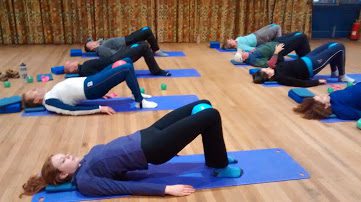How Everyday life can affect your posture
We all take movement for granted. After all, its natural. We’ve all know how much energy children have. They are always running around or playing, they squat down flat on their heels and then stand up straight. We all started like, this but over time we find that we spend more and more time seated and we stop moving as much. We spend more and more time leaning over studying at school, reading a book or a newspaper. We may sit slumped in an arm chair, or watching TV or eating dinner on our lap. We may spend time hunched up in a car, gazing down at our mobile, tablet or computer screen. Over time, this stooped position may affect our muscle lengths which in turns alters our posture and we find ourselves beginning to stoop. This altered posture may cause some of us to start having pain, often in the back or neck or shoulders
What is Pilates?
Pilates is gentle balanced movement that can be taken up by any age or level of fitness. What does balanced movement mean? Most activities favour specific muscles . One side of our body tends to get used more and becomes stronger than the other. In Pilates both the left and the right side of the body are moved and stretched equally . This helps to address any existing muscle imbalances. Pilates has many benefits. These include posture, flexibility, mobility, strength, muscle tone, stamina, breathing, balance, relaxation, and back and joint pain. It is used by professional athletes such as rowers, rugby players, footballers and dancers to complement their training and help reduce injuries.
Which Class?
Ask around for a recommendation. Have a look in the local newspapers or Google local classes to see what is available. Check out the teacher’s website to look at their timetable, approach and details of where they trained. Contact the teacher beforehand if the website doesn’t tell you, to see how many clients the teacher has in a class. Often a free taster class is offered so you can go along and see if you like the teacher’s method. If there is no free introductory class, ask if you can pay for one session before you commit yourself.

If you want a more individual attention you may prefer to have a private session. Before your first session you will need to fill in an application form which asks for details including any existing conditions such as back or joint issues, recent operations or medication that might affect how you exercise. This is to keep you safe and so the teacher can lesson plan to suit your personal needs. If you are unsure or undergoing treatment with a medical practitioner or therapist you should get clearance before you exercise. There will be a space on the application form asking if the Pilates teacher may contact your therapist. If you agree to this the teacher and therapist can then work hand in hand to tailor a programme to suit your needs.
The head
Did you know that the head is the heaviest part of the body and weighs approximately 10-11 pounds?
Many people with a stooped posture find their head is forward of their spine. For every inch of forward head posture it can increase weight of the head on the spine by an additional 10 pounds. Without correction over time the head can move further and further forwards, increasing the load we have to move with.
How Does Pilates Help Back Pain?

Pilates exercise is known for working the deep inner trunk muscles which help strengthen and stabilise the body. There are also specific exercises which, over time will help to increase movement in the upper back, where movement is often restricted, as well as strengthen the back muscles. These exercises also help to prevent any further deterioration and improve existing posture. Exercises are done lying down on the mat on the back, tummy, side, four point kneeling, seated and standing. Whatever position is used you will be taught how to keep this neutral spine which in turn will help to create more space between the spinal bones (vertebrae) so that there is less pressure on the cushioning between the spinal bones (discs).


